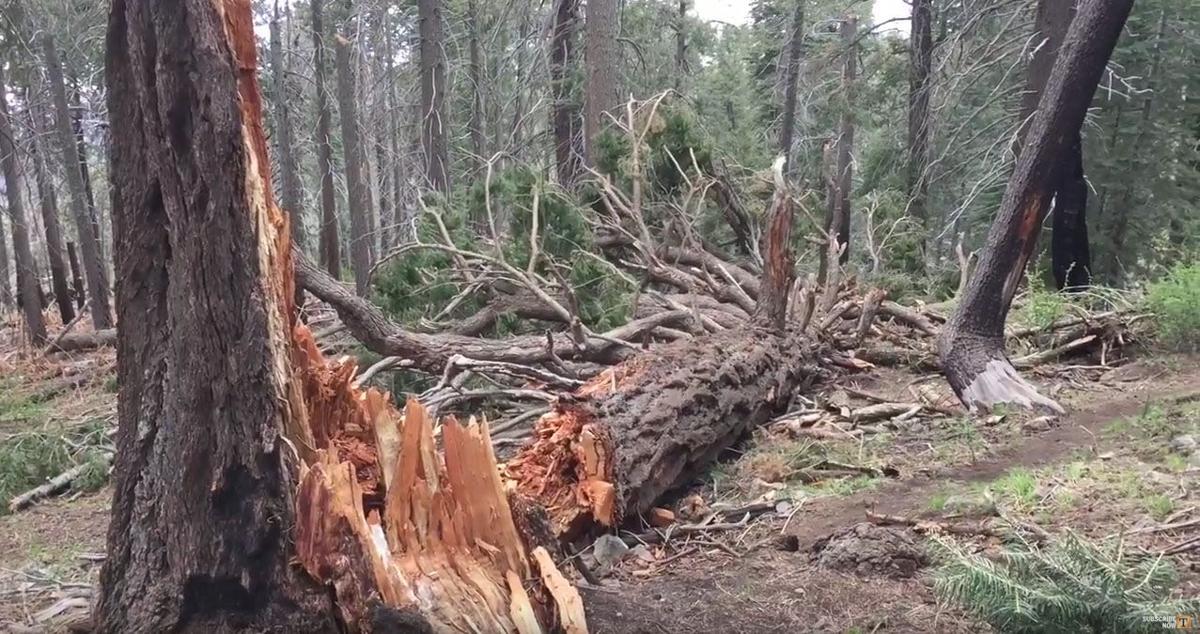An enormous Douglas fir tree — more than 100 feet tall and possibly 300 years old — has toppled to the ground near a trail high in the Catalina Mountains north of Tucson.
The towering tree, which had drawn the attention and admiration of generations of passing hikers on the Meadow Trail, might have been blown down by wind, say scientists with the University of Arizona Laboratory of Tree-Ring Research.
While the fallen tree’s apparent age was impressive, it was far younger than the oldest known Douglas fir still growing in the Catalinas — one that dates from the year 1320.
What felled it?
The downed tree, which could have been growing in the mountain forest well before the United States became a nation, apparently fell to the ground recently, based on the appearance of its bark and still-green needles.
“We’ve had a lot of wind lately, so it wouldn’t surprise me if this was a result of wind,” said William Wright, a research associate at the Laboratory of Tree-Ring Research. “And the tree might have had a rotten center” — weakening it.
Rex Adams, a retired senior research associate with the laboratory, examined photos of the tree and said “it looked like it had heart rot. That can happen with the bigger, older trees.
“What that means,” Adams said, “is that fungal pathogens start working on the heart wood. That’s the wood that gives the tree the strength to stand up.”
When the heart rot reaches a certain point and the wood becomes weak, a strong wind can bring the tree down, Adams said.
“That big tree was surrounded by smaller, younger trees,” he said. “It was probably the one catching the high winds.”
A SCENIC LOSS
Hikers who have walked the Meadow Trail near the top of Mount Lemmon have passed the tree, which grew on a slope above the trail. Many have stopped to admire and photograph it over the years.
It was a bit of scenic splendor — now lost and lamented.
OLDEST Douglas fir
Adams and Wright of the Tree-Ring Laboratory, often trekking in rugged terrain, have searched out some of the oldest trees in the Catalinas.
In 1998, Wright found what is believed to be the oldest living Douglas fir specimen in the range — a tree that was dated to the year 1320 by means of thin core samples that don’t damage trees.
One might imagine that a Douglas fir that was living 172 years before Christopher Columbus landed in the Americas would be gigantic.
Not so.
“It’s only 20 to 30 feet tall and 18 or 20 inches in diameter,” Wright said. “The oldest ones tend to be much shorter than younger ones” because they often survive in somewhat inhospitable but protected sites.
“It might be a site below ridge tops so lightning doesn’t get it and above rocks so fire doesn’t reach it” easily, Wright said. “The idea is that adversity makes trees more conservative in what they do. They won’t put on a bigger ring. They won’t put out as much energy with leaves and roots because they simply have to survive.”





